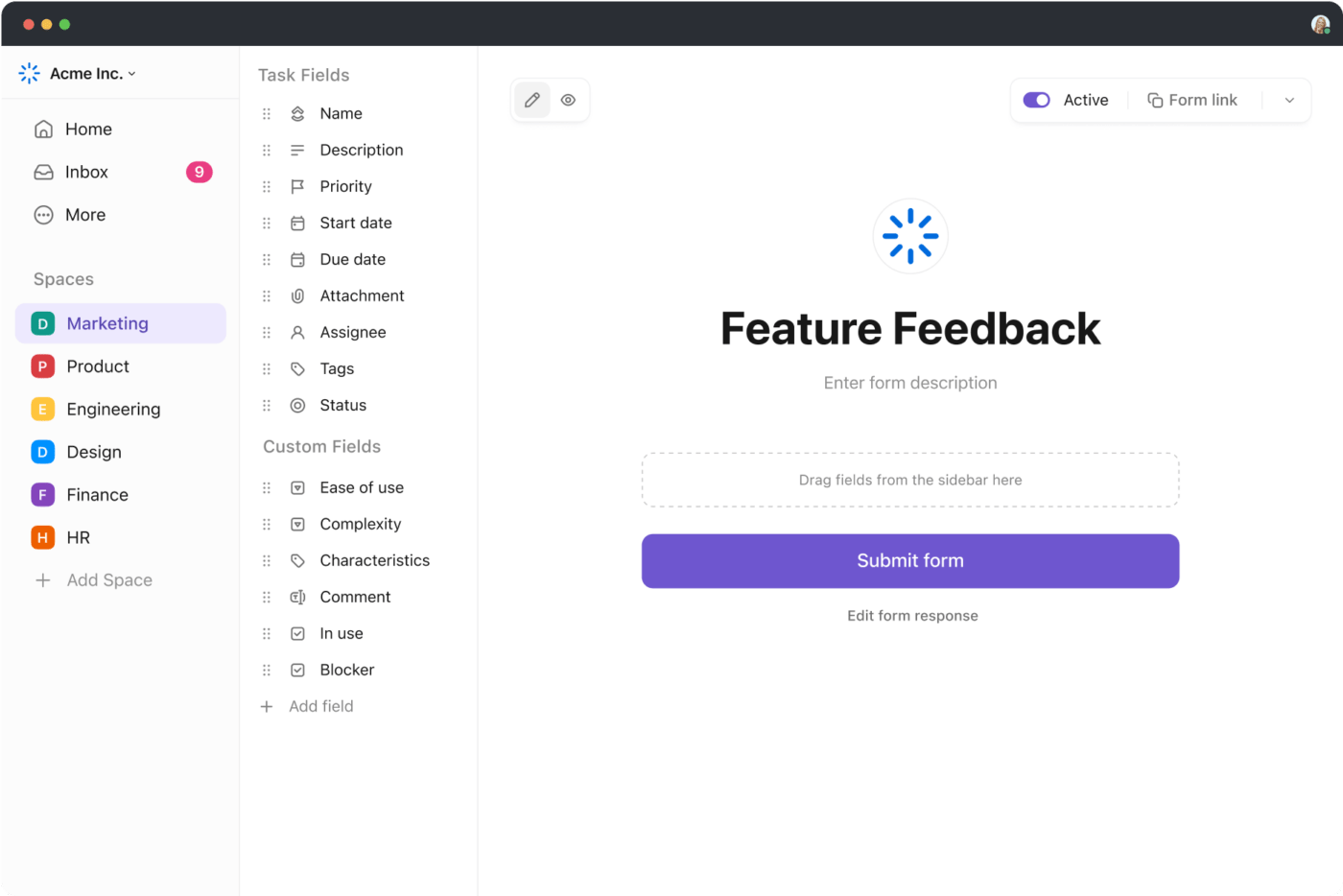How to Implement Kano Model Analysis (+ Examples)

Sorry, there were no results found for “”
Sorry, there were no results found for “”
Sorry, there were no results found for “”
To create a standout product in today’s competitive market, you must understand your customer’s needs and preferences. A customer-centric approach is key to building loyalty, attracting new clients, retaining existing ones, and increasing profits.
However, as customer preferences change, deciding which product features to prioritize can be challenging. The Kano Model offers a structured method for analyzing a feature’s impact on customer satisfaction.
In this post, we present a Kano Model analysis guide with examples of how to implement the model and how it can boost your business strategy.
The Kano Model, developed by Dr. Noriaki Kano in 1984, is a framework for categorizing and prioritizing product features based on their impact on customer satisfaction and lifecycle management.
Rooted in the idea that emotional responses drive customer satisfaction, the model helps assess which features meet basic expectations, which enhance satisfaction, and which delight customers. Like agile prioritization techniques, this model aids in aligning features with customer needs to maximize satisfaction and loyalty.
This product management framework categorizes product features into the following five distinct types based on their impact on customer satisfaction:
Customer responses gathered through surveys help classify the feature into one of the Kano Model’s categories, guiding product decisions intended to satisfy customers.
Creating a Kano Model survey helps capture and understand customer expectations, perceptions, and needs, enhancing the customer-centricity of your products.
To design the survey questionnaire, brainstorm and select the features you want to assess.
For every feature, ask the target audience two sets of questions:
Provide a set range of responses for both questions:
After creating the survey, send it to your team for pilot testing to identify any unclear or ambiguous language. Address these issues, then distribute the final questionnaire to your target audience via email, social media, and other channels.
Follow effective customer management strategies to increase survey participation and engagement. This will help ensure your survey accurately captures customer preferences that maximize customer delight.
After collecting customer responses, the next crucial step is to analyze and evaluate them.
Here’s how you can do it:
Step 1: Categorize individual responses: Analyze the combination of answers from each participant for both functional and dysfunctional questions. Use the table below to classify the responses for each feature
| Functional | Dysfunctional | Category | ||
| I expect it | + | I dislike it | → | Must-have |
| I like it | + | I dislike it | → | Performance |
| I like it | + | I am neutral | → | Attractive |
| I am neutral | + | I am neutral | → | Indifferent |
| I dislike it | + | I expect it | → | Reverse |
Let’s look at an example to understand the table above: say you’re designing a new car. If most drivers expect airbags (functional) and dislike not having them (dysfunctional), airbags are a must-have feature—they are essential. This table shows the categories that are the result of the combination of the functional and dysfunctional responses.
Note: If a participant provides an illogical or inconsistent answer, such as ‘I like it’ for both functional and dysfunctional questions, classify the response under the special category ‘questionable.’
Step 2: Conduct aggregate analysis: After categorizing individual responses, create a summary table to consolidate the data. For each feature, calculate the percentage of responses in each category relative to the total responses. This analysis will help you understand the relative position of feature categories
Step 3: Identify the final category for each feature: After calculating the percentages for each category, determine the category with the highest percentage for each feature. Create a column labeled ‘Result/Final Feature Category’ and list the category with the highest percentage for each feature
To make evaluating responses easier, consider using productivity tools that simplify data analysis and streamline the process.
ClickUp stands out as a comprehensive solution for managing and organizing your evaluation tasks efficiently.
ClickUp, as an all-in-one productivity platform, offers a range of powerful features that simplify Kano Model survey creation, data collection, and analysis.

ClickUp Forms allows you to create well-formatted surveys for a variety of purposes and easily gather relevant data and feedback from customers. Moreover, you can take action promptly by converting responses into trackable tasks. This streamlines the process of data collection, ensures timely follow-ups, and enhances the overall efficiency of managing survey results.

Once you collect the data, ClickUp Automations can streamline the process of categorizing individual responses by automating repetitive tasks. You simply need to set up rules and define criteria for tagging responses.
For instance, you can create a rule that assigns the ‘Performance’ tag to responses containing keywords such as ‘like it’ or ‘dislike it’ related to a specific performance feature.
After configuring the triggers and conditions, ClickUp Automations automatically categorizes responses based on the defined keywords, saving you time and effort.

With ClickUp Dashboards, you can visualize your data using charts and graphs, making it easy to identify key trends and patterns. This lets you quickly grasp the proportionate value of each response category for every feature, helping you easily pinpoint the final feature category at a glance.
It helps you monitor survey progress, analyze response categories, and generate detailed reports, making data interpretation more efficient and actionable.
ClickUp’s Kano Model Whiteboard Template simplifies the analysis and interpretation of Kano Model questionnaire results. It helps you categorize and prioritize features, identify high-value areas, and track your product development efforts over time.
This way, it helps you:
Bonus Tip: Use customer success software to streamline customer management. This way, you can centralize data, automate tasks, and track key metrics that affect customer satisfaction.
The Kano Model survey is particularly useful for projects with tight deadlines or limited budgets. It helps you pinpoint which features to prioritize to create a product or service that impresses and satisfies customers.
Here are several contexts and scenarios where the Kano model is beneficial:
The Kano Model assists product discovery and development teams create feature-rich products that customers expect. For instance, if a company is developing a new smartwatch, the Kano Model survey helps distinguish between essential features (such as heart rate monitoring) and those that can offer a competitive advantage (like sleep tracking and stress management features).
Marketing teams can use the Kano Model to design targeted campaigns that align with customer preferences.
For example, when launching a new home appliance, the model helps identify standout features (such as a unique voice command system or an in-built recipe assistant) that can be emphasized in advertisements and promotions to generate buzz, create excitement, and boost the product’s market appeal.
After a product launch, the Kano Model helps product managers assess how well the product meets customer expectations.
For instance, an online food delivery app can use the model to gather feedback on basic features like user interface design and checkout options. This helps identify crucial performance features, such as accurate real-time order tracking and responsive customer support, that are vital for customer satisfaction and may need improvement.
The Kano Model helps healthcare companies design patient-focused apps by balancing essential features and performance attributes.
For instance, it can guide the inclusion of must-have features like secure user authentication, performance features like tracking key health metrics, and attractive features such as personalized health tips. This ensures the app is both functional and exceeds patient expectations, ultimately enhancing the overall patient experience and increasing customer satisfaction.
Car manufacturers can use the Kano Model to enhance customer satisfaction by identifying and prioritizing features.
The model helps distinguish between essential features like safety airbags, performance attributes like a larger fuel tank, and appealing extras like an advanced entertainment system. By incorporating a mix of these features, manufacturers can create car models that are both satisfying and attractive to customers.
Streaming platforms use the Kano Model to refine their services and attract new users. It helps them identify key features that enhance the user experience, such as AI-driven recommendations and desirable extras like exclusive content offers. This approach ensures the platform meets user expectations and stands out in a competitive market.
Many companies have used the Kano Model to enhance various aspects of their operations, from product development to marketing strategies.
Here’s how some well-known companies have used the Kano Model to their benefit:
The Kano Model is a powerful tool for understanding customer needs and preferences, but it does have some limitations that can impact its effectiveness.
Here’s a closer look at these challenges:
Here’s how you can address these limitations:
The Kano Model identifies features that enhance customer satisfaction and drive product success. Integrating Kano analysis into your product development process helps create offerings that delight your customers and boost sales.
However, implementing the Kano Model can be challenging–this is where ClickUp can be a game changer. With its robust product management features and customizable templates, it simplifies the Kano analysis process, making it easier to implement and assess. Beyond the analysis phase, ClickUp helps you manage customer relationships and ensure ongoing product success.
So why wait? Sign up on ClickUp and streamline your Kano Model analysis process today!
© 2025 ClickUp